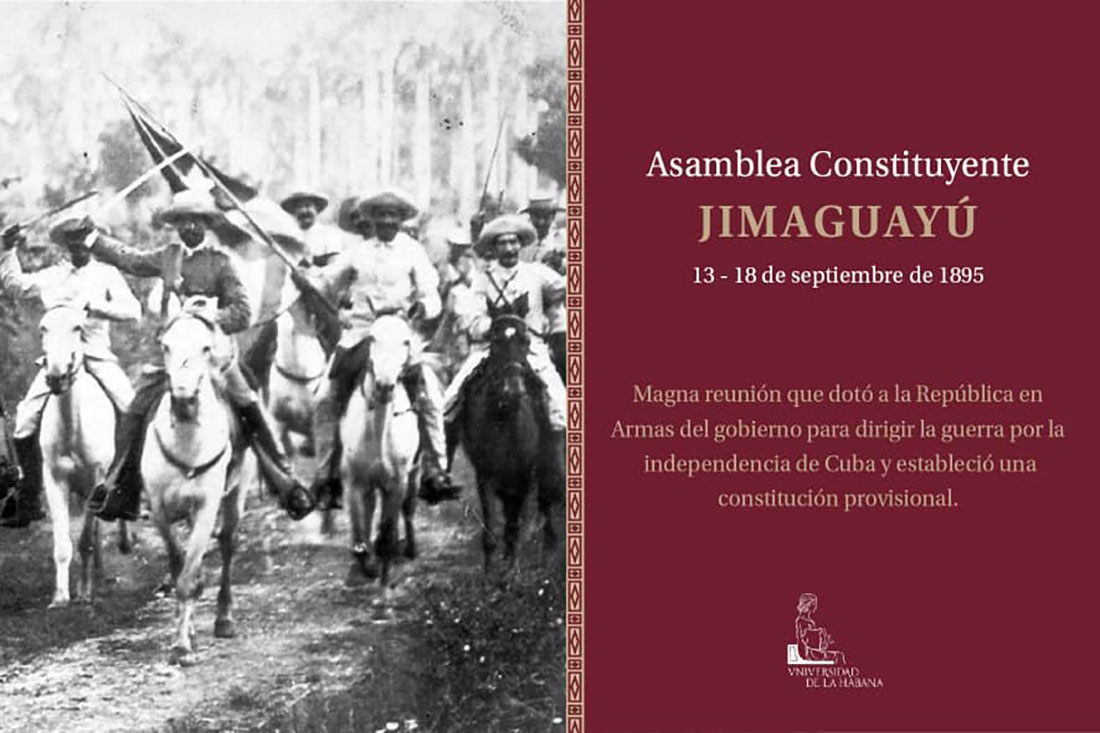On September 16th, 1895 in Jimaguayú, Camagüey, the 20 delegates who prepared and proclaimed the new Constitution for the independence of Cuba met. For the first time, the term “Republic of Cuba” was explicitly defined there to refer to the free and independent State. It was inspired by the spirit of Baraguá and from its preamble it declared: “the separation of Cuba from the Spanish monarchy and its constitution as an independent State.”
On February 24th, 1895, the War for Independence restarted. From the beginning of the conflict and in accordance with the tradition born in Guáimaro, there was a consensus that it was necessary to formulate a new constitution as a new legal and political norm. Likewise, for the international recognition of the Republic of Cuba.
When conditions changed after the Pact of Zanjón, in 1878, the Constitution of Baraguá was approved, in line with the circumstance in which the Mambisa forces had to act then. Therefore, it was natural that, when the war restarted in 1895, they thought about writing the rules for the new war.
Constitution of Jimaguayú. Visions
Unlike Guáimaro, the delegates did not respond to the territorial division of the country, but rather acted as “representatives of the army corps” existing at that time. The Cubans in arms assumed the representation of their people. Thus, an attempt was made to overcome the localisms and regionalisms of the past feat. (Torres-Cuevas, p. 177).
In Jimaguayú, for the first time, the term “Republic of Cuba” was explicitly defined to refer to the free and independent State.
The criterion, already visible in the Constitution of Baraguá, of a simple and practical organization prevailed. On the one hand, the Magna Carta approved in Jimaguayú was inspired by the spirit of Baraguá and from its preamble it declared: “the separation of Cuba from the Spanish monarchy and its constitution as an independent State.”
Like Maceo in his Protest, he recorded his revolutionary intransigence by emphasizing that any peace treaty with Spain: “must be based on the absolute independence of the Island of Cuba.”
No House of Representatives was created. The division of powers into Executive, Legislative and Judicial, which had been present since 1869, was maintained; But an Assembly of Representatives was not created in front of the executive power, but rather the existence of a Government Council was established, made up of six people, which brought together the executive and legislative powers.
The phrase: “all Cubans” was used to refer to individual and political rights, which implies an inclusive meaning in a discriminatory society for reasons of class, race, sex and nation.
The Constitution of Jimaguayú, in reality, did not establish the necessary autonomy for military power in the midst of a war, since in the Government Council it created a Secretariat of War “for the dispatch of war matters”, while at the same time It granted the Council the power to grant military ranks from Colonel to Major General. It also authorized intervention in military actions for “high political purposes,” which laid the foundations for conflicts between the General in Chief and the civil power. (López Civeira, F. 2021).
Its validity would only be during the period of the revolutionary war.
Participants
The plenary was made up of twenty members, five for each army, the four existing army corps and a fifth in formation (two in the East, Camagüey, Las Villas and the West). Among them, with a fairly low average age, were three lawyers, five doctors, three journalists, eight from various professions and a landowner.
As president of the Government of the Republic: Salvador Cisneros, Vice President Bartolomé Masó, Secretary of War Carlos Roloff, for high military positions Máximo Gómez as General in Chief of the Army, and Antonio Maceo as Lieutenant General.
Validity
Its validity was established for two years, after which, if the contest did not end, a new Constituent Assembly had to be held. In correspondence with this, La Yaya Assembly was held in 1897.
Bibliography
López Civeira, F. (2021) “La Constitución de Jimaguayú, una Constitución mambisa.” En Trabajadores. Material PDF.
Torres-Cuevas, E. y Suárez. R. (2018) El libro de las Constituciones. Ed. Imagen Contemporánea, La Habana, Cuba.
Translated by: Aileen Álvarez García






